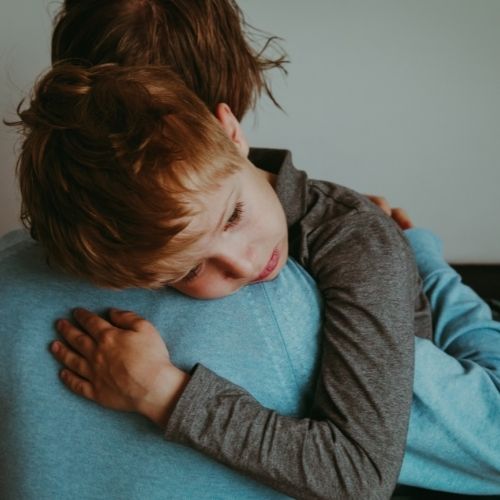Explain Anxiety to a Child
Many of us are familiar with what anxiety is, which is a normal emotion people feel when in overwhelming or tense situations. However, if one feels higher levels of anxiety than usual, and it comes often, it may be a medical disorder. This is what we call anxiety disorder, with many different types under this condition.
Anxiety disorders would alter the way people behave and process emotions, which causes physical symptoms like anxiety attacks. This can affect one’s daily life.
Unfortunately, not everyone understands what anxiety really is and what it entails for those who suffer from anxiety disorders. This article tackles how to explain anxiety to children and those who aren’t familiar with the disorder.
How to Explain Anxiety Properly
There isn’t one surefire way to explain anxiety to a person, as it depends on the way they understand things and see the world.
With children, you can share infographics and illustrations. Fortunately, there are now children’s books talking about mental health to educate little ones not only about the importance of our physical health but mental health, too. You can also start with a fun and understandable analogy, using their favorite animals or topics.
Answer all the questions they have in all seriousness, there is no “dumb” question! This can help them further understand what anxiety is and be aware if they feel anxious about something. And if your little one shows signs of an anxiety disorder, it can also help them express their feelings better for faster recovery and management of its symptoms.
When explaining it to an adult, you can try an analogy using something one is fearful of. Let’s say, spiders, for instance. Suppose someone asked to eat a huge spider. Many people won’t want to do that, even if it IS physically possible and not difficult to do.
The reason why most people won’t want to eat spiders is because of psychological reasons, especially for those who are afraid of them! Even the thought of eating a huge spider would make people shudder, and if they were actually in the situation, they would feel many symptoms of anxiety, from nausea to shortness of breath, or even feelings of dread and wanting to flee the area.
When you explain the spider analogy and its symptoms, this can let people be more aware that the symptoms they would feel if they were put into that situation is the same things those with an anxiety disorder would feel. Worse, such symptoms are felt in less-than-intense situations, or without any trigger at all!
What Else You Can Do to Explain Anxiety
There are other things you can do to help explain anxiety to children and people. Link out reputable websites regarding mental health and anxiety disorders for them to get a gist of what the disorder entails. Or, you can talk about personal experiences and educate them on how to comfort anyone going through anxiety attacks.
Through educating people about anxiety, especially children, they will be able to feel more empathy and know how to support anyone who may experience the difficult symptoms of anxiety disorders.
Anxiety disorders, among other mental illnesses, are on the rise. Because of this, it’s best to educate people about it to prepare themselves on how to deal with people who go through such conditions.
I hope this quick guide on how to explain anxiety to people helped you out. If you would like to explain anxiety to your loved ones, keep these analogies and tips in mind. Stay healthy!


